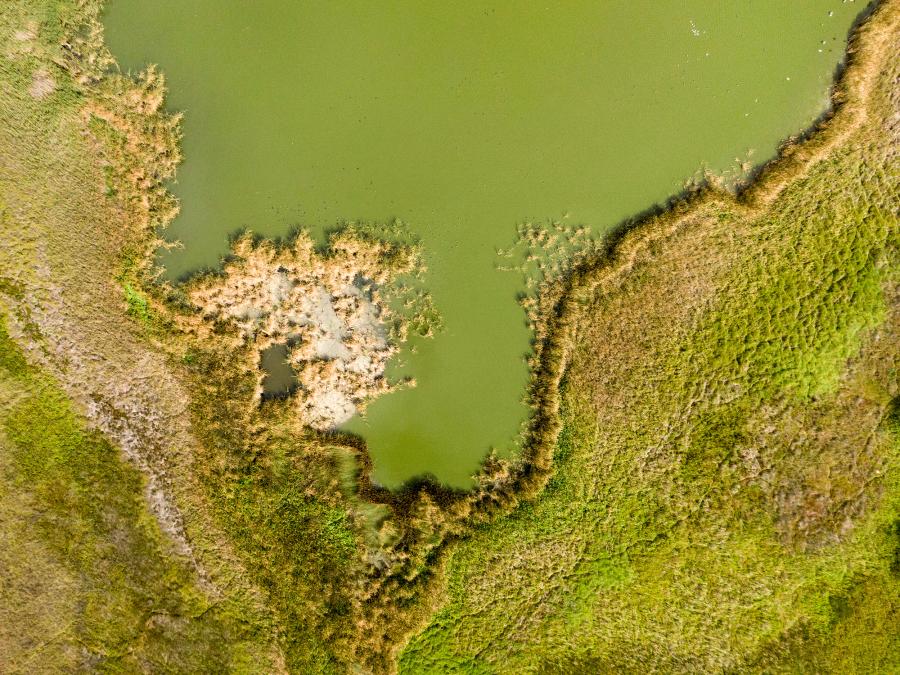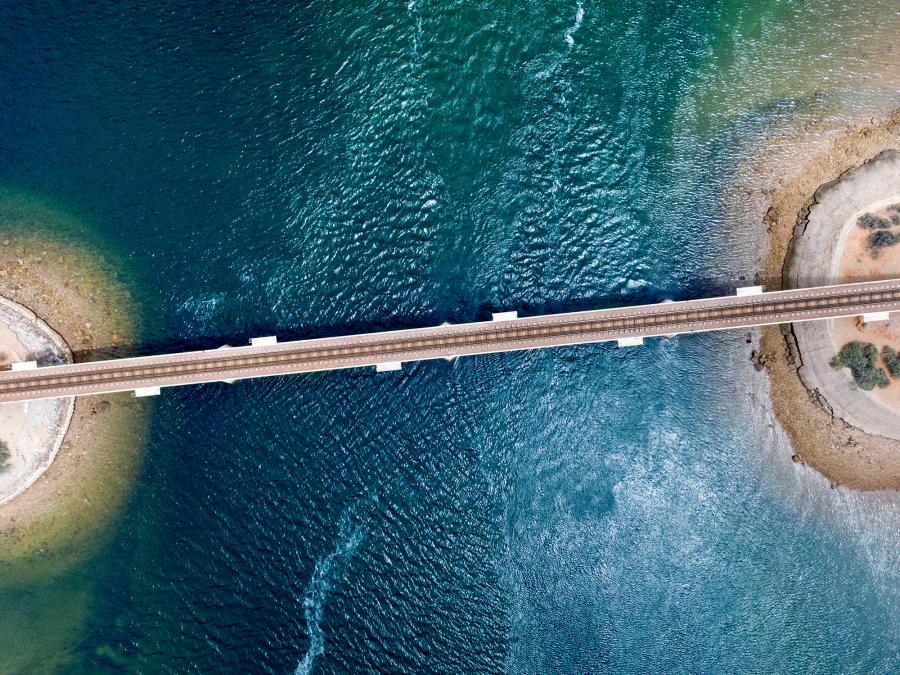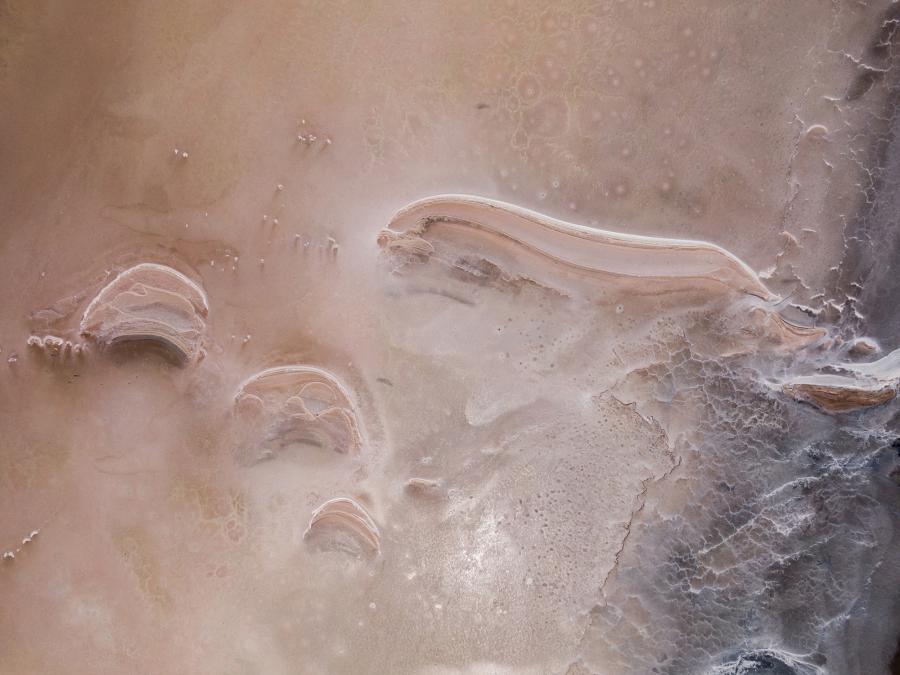Raymond Zada
The images in this series were shot from 100 metres above the ground and each show approximately 4km2 of various parts of South Australia. They pay tribute to our Aboriginal Diggers' connections to Country - particularly to those who never got to see their Country again.
Our minds and the environment around us share many similarities: they're both adaptable and resilient but can also be fragile and scarred. They can be quiet, contemplative places; and they can be full of energy and violence. They can be moulded, shaped and influenced; and they can be rigid and unyielding.
Based on our experiences, each of us will have different responses to the environments, colours and textures that we see. We can't always control our physiological responses. Sometimes it may be a fight-or-flight response when faced with a phobia; other times it could be a feeling of complete calm and belonging when we view familiar country and features.
A natural, subconscious response to viewing the moving images is neural adaptation. Your brain will slow the counter-clockwise motion of the video so much that when you view a still image, it will appear to be turning clockwise. This effect is short-lived.
The effects of post-traumatic stress disorder (PTSD) are not so short-lived. PTSD occurs when an over-reactive adrenaline response, triggered by a traumatic event, creates deep neurological patterns in your brain. The symptoms may not become apparent until years later and some Diggers haven't been diagnosed until decades later.
The Army learned a lot from the experiences and treatment of Vietnam Diggers and now provides greater recognition and support to personnel with PTSD.
The bushfire tarnished landscapes acknowledge Diggers with PTSD. The new growth isn’t apparent in the images but, given time and care, the areas will recover.
Raymond Zada
Barkindji people



